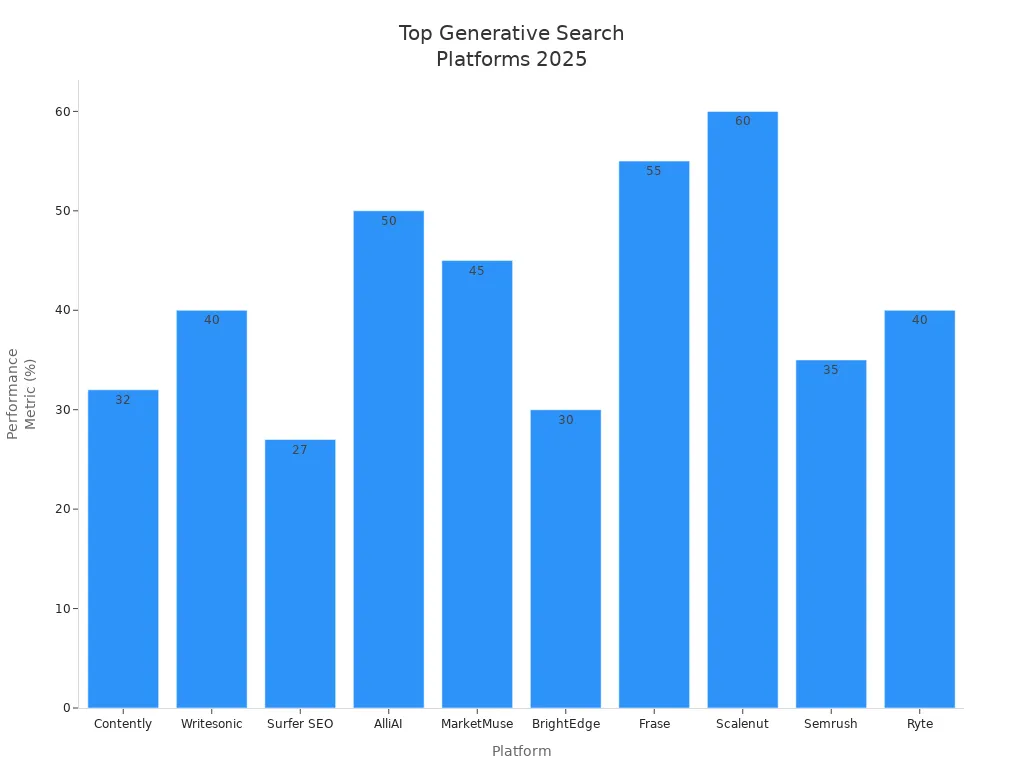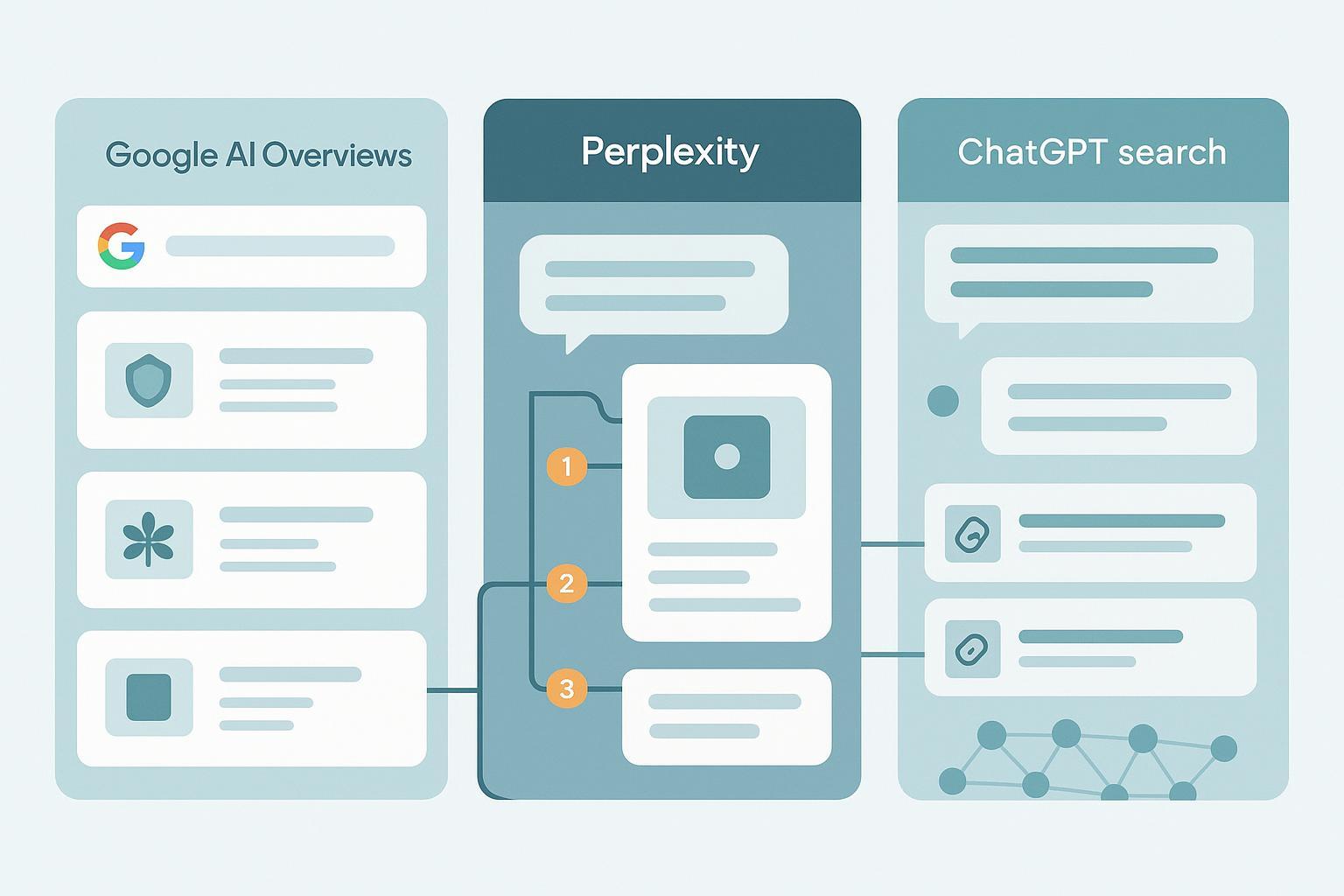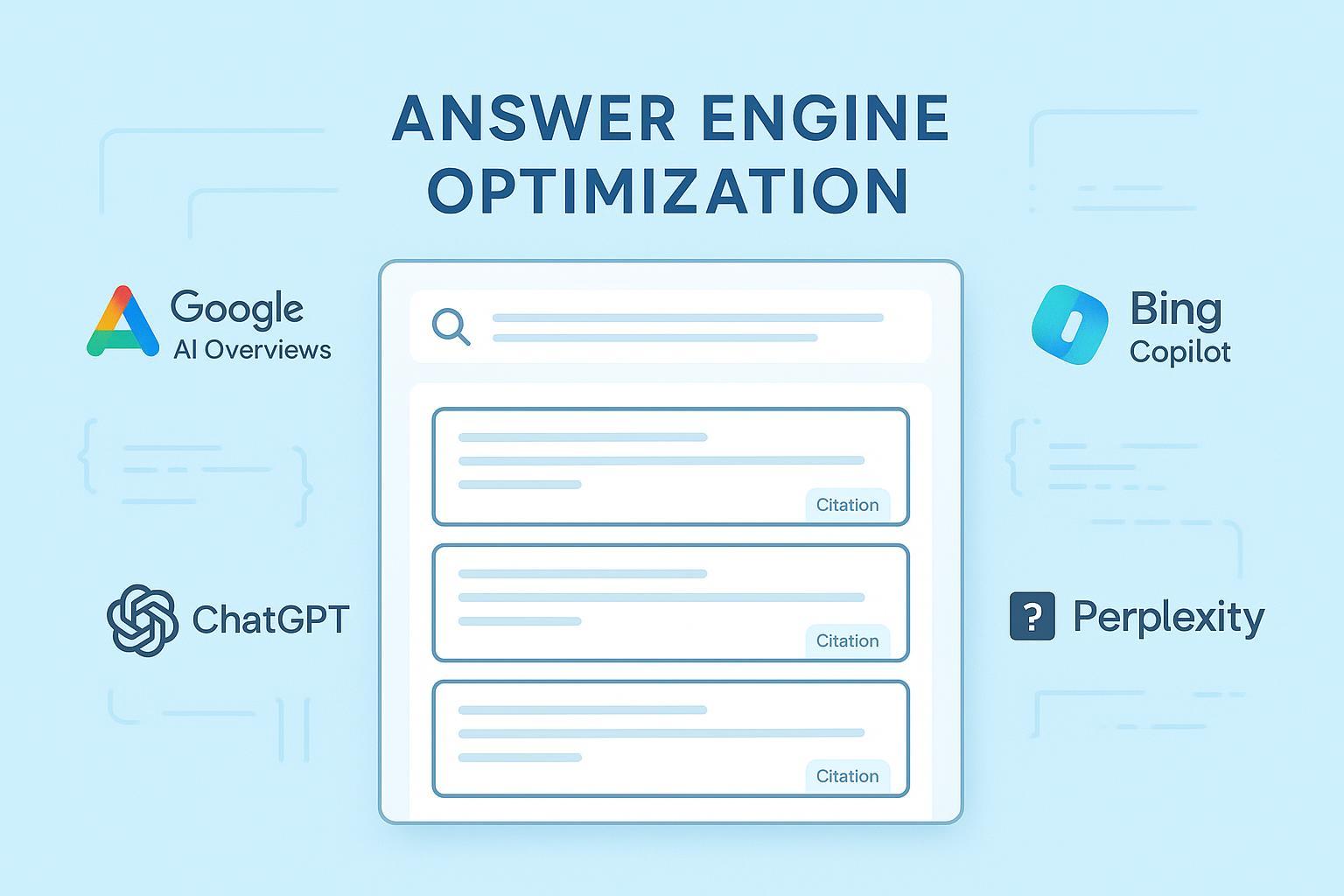3 easy steps to generative engine optimization success in 2025
Achieve generative engine optimization success in 2025 with three easy steps—write helpful content, use schema markup, and answer related questions.


Are you thinking about starting with generative engine optimization in 2025? You are not the only one. Almost 60% of companies have already started. So, you are in a good group. Here is an easy guide:
Write simple and friendly content that answers real questions.
Use schema markup so AI can understand your website.
Reach more people by making how-to guides on related topics.
Generative engine optimization is not just like old SEO. It helps AI search engines find your helpful how-to guides. With this guide, you can get noticed more, even if you are new!
Key Takeaways
Write easy and friendly content that answers real questions. This helps AI and people understand your site.
Use schema markup to give AI clear facts about your pages. This can help you show up in AI results.
Make guides that answer many related questions. This shows you know a lot and helps you reach more readers through AI.
Keep your website fast and simple to use. Make sure it is well-organized so AI can find and share your content easily.
Use free tools to track your progress. Update your content often to stay seen in AI search results.
Generative Engine Optimization Basics

Generative engine optimization is changing how people find things online. In 2025, you need to do more than just regular search engine optimization. Now, ai-driven search engines like ChatGPT, Perplexity, and Gemini are very popular. These platforms do not only give you a list of links. They give you direct answers in a chat style. This is why generative engine optimization is important. You want your content to show up in these ai answers, not just in search results.
What Are Generative Engines?
Generative engines use ai to work. They are not like old search engines. They do not just look for keywords. They try to understand what you really want to know. When you ask a question, these engines use ai to find information from their data and the web. Then, they make a new answer just for you. You do not need to guess the right keywords. You get a clear answer right away. Google and other big companies now use generative ai to organize and show information in smarter ways.
Tip: If you want your content in ai answers, write clearly and use facts. Make sure you answer real questions that people ask.
Key Platforms
Many platforms are leaders in generative engine optimization. Some top ones in 2025 are Contently, Writesonic, Surfer SEO, AlliAI, MarketMuse, BrightEdge, Frase, Scalenut, Semrush, and Ryte. Each platform is good at something different. For example, Contently helps big teams with ai optimization. Writesonic helps you rank higher in tough markets. Surfer SEO gives you tips to make your content better for ai engines.

You should also know about Single Grain. This company is special because it knows a lot about ai and helps B2B brands. They use smart ideas to help you get seen by ai-driven search engines.
The biggest change between generative engine optimization and old seo is how you make content. Old seo was about keywords and backlinks. Now, you need to think about what people want to know and how ai will use your content. You want to make content that ai can find, understand, and share easily. This means writing answers that match what people really ask and making it simple for ai to use.
If you focus on what people want and give direct answers, you have a better chance to be in ai summaries. This helps you stay important as more people use ai to search for things.
Content Creation for GEO

Making content for generative engine optimization in 2025 is not like old SEO. You want your work to be noticed by both ai and people. Let’s look at the best ways to do this.
Conversational Writing
Try to write like you are talking to a friend. This helps ai understand you. It also makes your writing more fun to read. Here is a simple guide to help you:
Think about what your readers want to know. Write answers the way people ask questions.
Use easy words and short sentences. Do not use hard words or long talks.
Add headings with common questions. Give clear answers right after.
Change up your sentence length and style. This keeps your writing interesting.
Share your own stories or examples. These make your writing feel real and honest.
Use active voice. Say, “You can do this,” not, “This can be done.”
Break up your writing with lists, tables, or tips. This helps ai and people read your page.
Tip: Conversational writing matches how people search and how ai reads. This helps you show up in ai answers.
Studies show that writing in a friendly way gets picked up more by ai. When you answer questions clearly and use normal words, ai can share your work easily. This also helps people enjoy reading and understand better.
Schema Markup
Schema markup is a special tool for your content plan. It helps ai know what your page is about. You add code to your site that tells ai if your page is a product, a blog, an event, or something else. This makes it easier for ai to find and use your work.
Here is a quick guide to schema markup:
Add schema to your pages with tools or plugins like Yoast SEO or Rank Math.
Pick the right schema type for your page. For example, use FAQ schema for question pages or Product schema for stores.
Fill in all the details. The more you give, the better ai can understand your page.
Test your schema with Google’s Rich Results Test to check if it works.
Schema Markup Type | Purpose/Use Case | Relevance to GEO 2025 |
|---|---|---|
Product Reviews | Show star ratings in search | Helps ai and search engines make rich product info |
Events | Show event time and place | Powers event previews in search and ai summaries |
FAQs | Give question and answer pairs | Triggers FAQ drop-downs, making your content seen more |
Mark author, date, and article info | Helps ai engines understand your content | |
Ecommerce Schemas | Show products, offers, and stock | Important for WooCommerce and ecommerce SEO |
WordPress General | General site data | Used by plugins for GEO |
WooCommerce Specific | Ecommerce platform schema | Helps ai-powered ecommerce search and summaries |
LMS Platforms | Online course details | Important for learning content in ai search |
Schema markup gives ai a clear map of your site. It helps your work show up in rich results, voice search, and ai summaries. This is a must-have for any content plan in 2025.
Query Fanout
Query fanout means you answer not just one question, but all the related ones people might ask. Ai engines break big questions into smaller ones. If your work covers these, you have a better chance to be shown.
Here is how you can use query fanout:
Think of all the small questions about your main topic. For example, if your topic is “how to plant tomatoes,” think about “best soil for tomatoes,” “how much water do tomatoes need,” and “when to pick tomatoes.”
Make a guide for each small topic. This shows you know a lot and helps ai find your answers.
Group your guides together. This helps ai see you as an expert.
Use tools like AlsoAsked or Keyword Insights to see what people search for.
Make your work easy to read. Use headings, bullet points, and short answers.
Note: Covering many related questions helps ai find you and builds trust with your readers.
When you use query fanout, you help ai match your work to many user needs. This brings more people to your site and makes your work better. A study from the 2025 GEO Conference showed that making lots of guides for small questions helped a store get more ai mentions and more sales.
Creating Clear, Helpful, and Trustworthy Content
You want your work to be easy for both ai and people to trust. Here is a simple checklist:
Add your own ideas or expert quotes.
Write in a positive, helpful way.
Make sure your site loads fast and is easy to use.
If you follow this guide, you will make your work better, get more readers, and get your site ready for ai search. Remember, the best plan is to focus on what your readers need and make it easy for ai to find and share your answers.
SEO & Performance Tracking
Technical SEO
You want your website to work well for people and ai. Technical seo is the base of generative engine optimization. If you miss this step, ai bots may not find your content. Focus on crawlability, site structure, and speed. Here is a table that shows what is important:
Technical SEO Factor | Why It Matters for GEO and AI |
|---|---|
Crawlability & Indexing | Lets ai bots find and use your content |
Site Architecture | Shows ai how your topics connect |
Structured Data / Schema Markup | Helps ai understand your facts |
Page Speed & Mobile Readiness | Makes your site fast and easy for everyone |
Renderability (SSR preferred) | Lets ai see all your content, even hidden parts |
HTTPS & Security | Builds trust with users and ai |
Canonicalization & Duplicate Management | Stops confusion about which page is best |
Sitemap & Robots.txt Management | Guides ai to your best pages |
Watch out for common seo mistakes. Slow sites, bad mobile design, and missing sitemaps can lower your ranking. If you block ai bots, your content will not show in ai answers.
Tip: Use semantic HTML and simple code. This helps ai crawl and understand your site better.
Metrics
It is important to track your progress in generative engine optimization. You need to know what works and what does not. Here are some key metrics to check:
Engagement rate: See how many people interact with your content.
Time on page: Check if visitors stay and read.
Click-through rate: Find out if people click your links.
Conversion rate: Measure how many visitors take action.
Readability and relevance scores: Make sure your content is clear and useful.
Sentiment analysis: Learn how people feel about your brand.
Brand mentions and citations in ai answers: Track how often ai includes your brand.
AI visibility score: See how often ai platforms show your content.
Use both numbers and feedback from users. Surveys, comments, and polls help you know what your audience likes.
Adaptation
Generative engine optimization is not something you do once. You need to keep checking your seo and update your plan. AI changes quickly, so you must pay attention. Free tools like Hall and Otterly.ai help you track brand mentions, citations, and ai visibility. These tools show if your seo plan is working or needs a change.
Check your metrics often. If you see fewer ai mentions or less engagement, try new content or update your site. Regular audits and testing keep your seo strong. This helps you follow the latest ai search trends and stay ahead.
Note: The best seo tips are to update often and use free tools to track your progress. This keeps your generative engine optimization plan fresh and working well.
You now have a simple guide to generative engine optimization. Just remember these three steps: write helpful content, use schema markup, and answer related questions. GEO gives you a future-proof way to stand out, even if you are new. Many beginners face technical challenges, but this guide makes it easier.
Ready to start? Try this quick-start checklist:
Pick one topic and write a clear guide.
Add schema markup with a plugin.
Answer extra questions your readers might ask.
If you want to learn more, check out communities like AthenaHQ, KAI Footprint, or 42DM. You can do this—let your guide lead the way!
FAQ
What is the main difference between GEO and traditional SEO?
GEO helps you get noticed by AI search engines. You focus on answering real questions, not just using keywords. AI looks for helpful, clear answers. You want your content to show up in AI chat results.
Do I need coding skills to use schema markup?
No, you do not need to code. Many plugins add schema markup for you. Tools like Yoast SEO or Rank Math make it easy. You just fill in the details, and the plugin does the rest.
How often should I update my GEO content?
You should check your content every few months. AI search changes fast. Update your guides when you see new questions or trends. Fresh content helps you stay visible in AI results.
Can I use free tools for GEO performance tracking?
Yes! You can use free tools like Hall, Otterly.ai, and Google Search Console. These tools help you track your site’s visibility, mentions, and engagement. You do not need to pay to get started.
See Also
Step-By-Step Guide To Applying Generative Engine Optimization
Effective Techniques For Assessing Generative Engine Optimization
Key Ethical Issues Surrounding Generative Engine Optimization
The Importance Of Generative Engine Optimization For B2B SaaS
Understanding The Basics Of Generative Engine Optimization GEO





